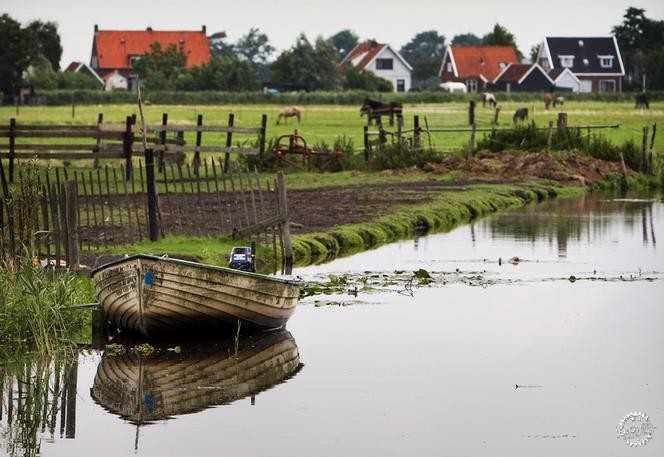
垃圾场向与自然保护区之间的转变
Huge gifbelt transformed into a nature reserve
由专筑网pilewyj,李韧编译
阿姆斯特丹北部的Volgermeer区域曾经是荷兰最大的问题地区,这里曾经是垃圾填埋场,占地面积约为100公顷,囊括了约有大量的二氧芑和苯。现在,经过荷兰有史以来最大的土壤修复之后,这个曾经被重度污染的区域如今已经成为了自然保护区。
Volgermeer地区将于星期二正式开放, Willem-Alexander揭开了De Veenarbeider的神秘面纱,并从市长Eberhard van der Laan手中得到了一本名为《The Recreation of the Volgermeer》的书。
1981年,在当地居民的一再坚持下,垃圾填埋场终于关闭,但是对于该地区的复兴举措直到2003年才正式开始。因为很长一段时间,政府没有足够的资金用于这项巨大的工程,而这项工程的花费大约为1亿欧元。
受到污染的土壤掩埋在旧泥炭土中,因此,可以应用相对简单的修复方法。毒物无需清除,而是通过箔片和厚厚的土壤和水层覆盖,它们共同形成了所谓的湿润层。市政府还每年检查遭受污染的地下水的流散去向。
Volgermeer区隶属阿姆斯特丹的管辖范围,但是同时又十分接近Waterland的Broek村镇。在上个世纪,泥炭土被挖掘,而挖掘产生的沟渠、洞穴则被日常生活垃圾给填满。
后来,这个地区仍然拥有垃圾填埋场的功能,在20世纪60年代,大量非法化学废物倾倒在这里,这些废物主要来源于工厂的药品和农药残留物品,这些物质的危害在1980年曝光,因为当时有许多团队都在对此进行调查工作。
该场地在关闭30年后,这座曾经的垃圾填埋场被改造为富有稻田和水道的自然保护区,同时也是珍稀动植物的栖息地。Volgermeer区域长期以来人烟稀少,但从这个星期开始,骑行者、步行者、骑手和皮划艇运动员都时常来到这里。(THE PAROOL)
The Volgermeer polder in Amsterdam-Noord was one of the biggest poison in our country. The former landfill with a size of 100 hectares housed as many as ten thousand barrels with dioxins and benzenes. Now, after the largest soil remediation ever in the Netherlands, the heavily polluted terrain has been transformed into a nature reserve.
Prince Willem-Alexander will open the renovated Volgermeer polder on Tuesday. He unveils the image De Veenarbeider and gets from the hands of Mayor Eberhard van der Laan the book The Recreation of the Volgermeer.
Although at the insistence of troubled local residents the landfill closed down in 1981, the approach to the area began only in 2003. For a long time there was not enough money available for this gigantic job, which cost around 100 million euros.
The dirt is embedded in the old peat soil. As a result, a relatively simple way of remediation could be applied. The poison did not have to be removed, but is covered with foil and thick layers of soil and water, which together form a so-called wet layer. The municipality also checks annually whether any contaminated groundwater escapes.
The Volgermeer polder belongs to Amsterdam but is close to the village of Broek in Waterland. In the twenties, peat was extracted and the tile holes were filled with household waste.
Later on the area was given the function of landfill, where in the 1960s a lot of illegal chemical waste was dumped. This mainly concerned residual products from the manufacture of pesticides. The poison came to light in 1980, on which many investigations followed the possibilities to clean up the site.
on it will again be a plaThirty years after the closure, the dangerous landfill has been transformed into a water-rich nature reserve with rice fields and watercourses, where there is room for rare plants and animals. The Volgermeer polder was inaccessible for a long time, but from this weekce for cyclists, hikers, riders and canoeists. (THE PAROOL)
|
|
专于设计,筑就未来
无论您身在何方;无论您作品规模大小;无论您是否已在设计等相关领域小有名气;无论您是否已成功求学、步入职业设计师队伍;只要你有想法、有创意、有能力,专筑网都愿为您提供一个展示自己的舞台
投稿邮箱:submit@iarch.cn 如何向专筑投稿?
